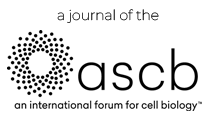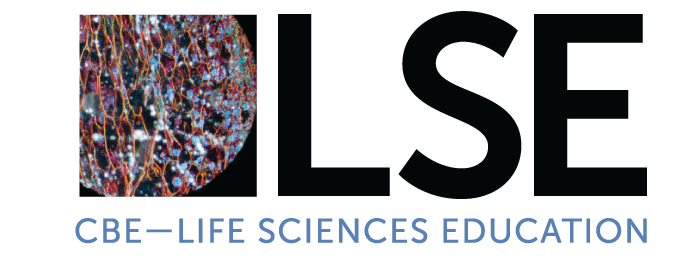Reference List
Definitions, Underpinnings, Benefits, & Cautions
Rodriguez, M. C., & Albano, A. D. (2017). The college instructor’s guide to writing test items: Measuring student learning. Routledge.
Mager, R. F. (1962). Preparing instructional objectives: A critical tool in the development of effective instruction (1st ed.). Fearon Publishers.
Mager, R. F. (1997). Preparing instructional objectives: A critical tool in the development of effective instruction (3rd ed.). Atlanta, GA: Center for Effective Performance.
Bumpus, E. C., Vinco, M. H., Lee, K. B., Accurso, J. F., & Graves, S. L. (2020). The consistency of expectations: An analysis of learning objectives within cognitive assessment course syllabi. Teaching of Psychology, 49(1), 30–36.
Effective Construction
Mager, R. F. (1962). Preparing instructional objectives: A critical tool in the development of effective instruction (1st ed.). Fearon Publishers.
Mager, R. F. (1997). Preparing instructional objectives: A critical tool in the development of effective instruction (3rd ed.). Atlanta, GA: Center for Effective Performance.
Spence, B. (2019). Using Bloom’s taxonomy matrix to reach higher-level learning objectives. Radiologic Technology, 90(6), 622–624.
Georgia Tech. (n.d.). Developing student learning outcome statements. Office of Academic Effectiveness.
Shabatura, J. (2013, September 27). Using Bloom’s taxonomy to write effective learning objectives. Teaching Innovation and Pedagogical Support.
Instructor Use
Chasteen, S. V., Perkins, K. K., Beale, P. D., Pollock, S. J., & Wieman, C. E. (2011). A thoughtful approach to instruction: Course transformation for the rest of us. The Journal of College Science Teaching, 40, 24–30.
Armbruster, P., Patel, M., Johnson, E., & Weiss, M. (2009). Active learning and student-centered pedagogy improve student attitudes and performance in introductory biology. CBE-Life Sciences Education, 8(3), 203–213.
Dobbins, K., Brooks, S., Scott, J. J. A., Rawlinson, M., & Norman, R. I. (2016). Understanding and enacting learning outcomes: The academic’s perspective. Studies in Higher Education, 41(7), 1217–1235.
Assessment
Jalloh, C., Collins, B., Lafleur, D., Reimer, J., & Morrow, A. (2019). Mapping session learning objectives to exam questions: How to do it and how to apply the results. Medical Teacher, 42(1), 66–72.
Chasteen, S. V., Pepper, R. E., Caballero, M. D., Pollock, S. J., & Perkins, K. K. (2012a). Colorado Upper-Division Electrostatics diagnostic: A conceptual assessment for the junior level. Physical Review Special Topics—Physics Education Research, 8, 020108-1-020108-15.
Chasteen, S. V., Pollock, S. J., Pepper, R. E., & Perkins, K. K. (2012b). Thinking like a physicist: A multi-semester case study of junior-level electricity and magnetism. American Journal of Physics, 80, 923–930.
Minbiole, J. (2016). Improving course coherence & assessment rigor: “Understanding by Design” in a nonmajors biology course. The American Biology Teacher, 78(6), 463–470.
Ricke, A. (2019). Mapping assessment in anthropology: Using team‐based qualitative methodology to create learning objectives and evaluate outcomes. The Annals of Anthropological Practice, 43(2), 53–71.
Keshavarz, M. (2011). Measuring course learning outcomes. Journal of Learning Design, 4(4), 1–9.
Rodriguez, M. C., & Albano, A. D. (2017). The college instructor’s guide to writing test items: Measuring student learning. Routledge.
ASK-BIO. (2021). ASK-BIO Network Regional Workshops.
Course and Curriculum Design
McTighe, J., & Wiggins, G. (2012, March). Understanding by design framework. Association for Supervision and Curriculum Development.
Minbiole, J. (2016). Improving course coherence & assessment rigor: “Understanding by Design” in a nonmajors biology course. The American Biology Teacher, 78(6), 463–470.
Reynolds, H. L., & Kearns, K. D. (2017). A planning tool for incorporating backward design, active learning, and authentic assessment in the college classroom. College Teaching, 65(1), 17–27.
Smith, G. A., Stark, A., & Sanchez, J. (2019). What does course design mean to college science and mathematics teachers? The Journal of College Science Teaching, 48, 81–91.
Fata-Hartley, C. (2011). Resisting rote: The importance of active learning for all course learning objectives. The Journal of College Science Teaching, 40(3), 36–39.
Leone, E. A., Salisbury, S. L., Nolen, Z. L., Idema, J. L., Parsley, K. M., Stefanik, K. L., & Daniel, K. L. (2019). Identifying the breakdowns in how students and faculty interpret course objectives. Bioscene: The Journal of College Biology Teaching, 45(1), 16–23.
Bowen, R. S. (2017). Understanding by design. Vanderbilt University Center for Teaching.
Milkova, S. (n.d.). Strategies for effective lesson planning. Center for Research on Learning and Teaching (CRLT).
Student Buy-in & Metacognition
Simon, B., & Taylor, J. (2009). What is the value of course-specific learning goals? The Journal of College Science Teaching, 39, 52–57.
Bowman, D. R., & Stephan, E. (2012). Using GEARSET to promote student awareness of learning objectives. Computers in Education Journal, (3)2, 27–33.
Babik, D., & Lending, D. (2020). Teaching tip: Visualizing IS course objectives and marketable skills. Journal of Information Systems Education, 31, 260–268.
Active Learning
Reynolds, H., & Kearns, K. D. (2017). A planning tool for incorporating backward design, active learning, and authentic assessment in the college classroom. College Teaching, 65, 17–27.
Minbiole, J. (2016). Improving course coherence & assessment rigor: “Understanding by Design” in a nonmajors biology course. The American Biology Teacher, 78(6), 463–470.
Fata-Hartley, C. (2011). Resisting Rote: The importance of active learning for all course learning objectives. The Journal of College Science Teaching, 40, 36–39.
Influential but not cited
Engaging with Colleagues
Pepper, R. E., Chasteen, S. V., Pollock, S. J., & Perkins, K. K. (2012). Facilitating faculty conversations: Development of consensus learning goals. AIP Conference Proceedings, 1413, 291.
Richlin, L., & Cox, M. D. (2004). Developing scholarly teaching and the scholarship of teaching and learning through faculty learning communities. New Directions for Teaching and Learning, 97, 127–135.
Smith, G. A., Stark, A., & Sanchez, J. (2019). What does course design mean to college science and mathematics teachers? The Journal of College Science Teaching, 48, 81–91.
ASK-BIO network regional workshops. (2021). ASK-BIO Assessment Skills in Biology.
Influential but not cited
Cox, M. D. (2003). Fostering the scholarship of teaching through faculty learning communities. Journal on Excellence in College Teaching, 14 (2/3), 161–198.
Student Use
Guiding Learning
Osueke, B., Mekonnen, B., & Stanton, J. D. (2018). How undergraduate science students use learning objectives to study. Journal of Microbiology & Biology Education, 19(2), 1–8.
Simon, B., & Taylor, J. (2009). What is the value of course-specific learning goals? The Journal of College Science Teaching, 39, 52–57.
Brooks, S., Dobbins, K., Scott, J. J. A., Rawlinson, M., & Norman, R. I. (2014). Learning about learning outcomes: the student perspective. Teaching in Higher Education, 19(6), 721–733.
Wang, X., Su, Y., Cheung, S., Wong, E., & Kwong, T. (2013). An exploration of Biggs’ constructive alignment in course design and its impact on students’ learning approaches. Assessment & Evaluation in Higher Education, 38, 477–491.
Leone, E. A., Salisbury, S. L., Nolen, Z. L., Idema, J. L., Parsley, K. M., Stefanik, K. L., & Daniel, K. L. (2019). Identifying the breakdowns in how students and faculty interpret course objectives. Bioscene: The Journal of College Biology Teaching, 45(1), 16–23.
Influential but not cited
Young, D., & Ley, K. (1998). Self-regulation behaviors in underprepared (developmental) and regular admission college students. Contemporary Educational Psychology, 23(1), 42–64.
Winkelmes, M., Bernacki, M., Butler, J., Zochowski, M., Golanics, J., & Weevil, K. H. (2016). A teaching intervention that increases underserved college students’ success. Peer Review, 18(1/2), 31–36.
Pretesting
Beckman, W. S. (2008). Pre-testing as a method of conveying learning objectives. Journal of Aviation/Aerospace Education & Research, 17(2), 61–70.
Sana, F., Forrin, N. D., Sharma, M., Dubljevic, T., Ho, P., Jalil, E., & Kim, J. A. (2020). Optimizing the efficacy of learning objectives through pretests. CBE
Life Sciences Education, 19(3), 1–10.
Influential but not cited
Little, J., & Bjork, E. (2011). Pretesting with multiple-choice questions facilitates learning. Cognitive Science, 33, 294–299.
Outcomes
Armbruster, P., Patel, M., Johnson, E., & Weiss, M. (2009). Active learning and student-centered pedagogy improve student attitudes and performance in introductory biology. CBE-Life Sciences Education, 8(3), 203–13.
Chasteen, S. V., Perkins, K. K., Beale, P. D., Pollock, S. J., & Wieman, C. E. (2011). A thoughtful approach to instruction: Course transformation for the rest of us. The Journal of College Science Teaching, 40, 24–30.
Minbiole, J. (2016). Improving course coherence & assessment rigor: “Understanding by Design” in a nonmajors biology course. The American Biology Teacher, 78(6), 463–470.
Hebert, A. K., & O’Donnell, C. (2020). Tailoring case studies to course learning objectives helps improve student performance. HAPS Educator, 24(3), 34–41.
Jalloh, C., Collins, B., Lafleur, D., Reimer, J., & Morrow, A. (2019). Mapping session learning objectives to exam questions: How to do it and how to apply the results. Medical Teacher, 42(1), 66–72.
Reynolds, H., & Kearns, K. D. (2017). A planning tool for incorporating backward design, active learning, and authentic assessment in the college classroom. College Teaching, 65, 17–27.









